- Home
- TV History
- Network Studios History
- Cameras
- Archives
- Viewseum
- About / Comments
Skip to content




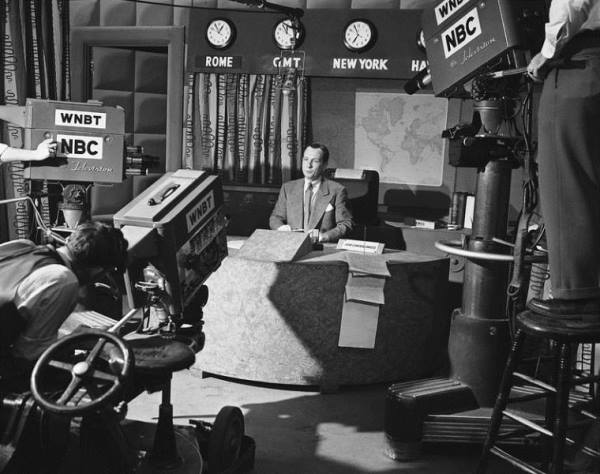









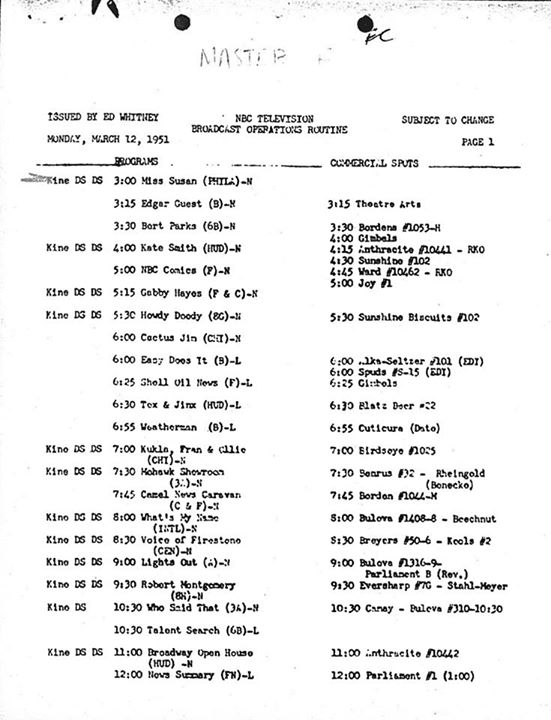





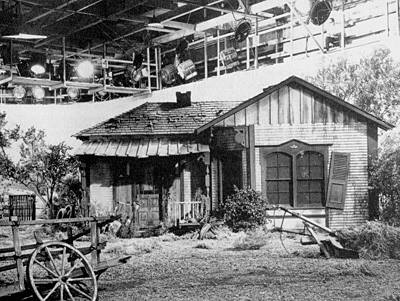



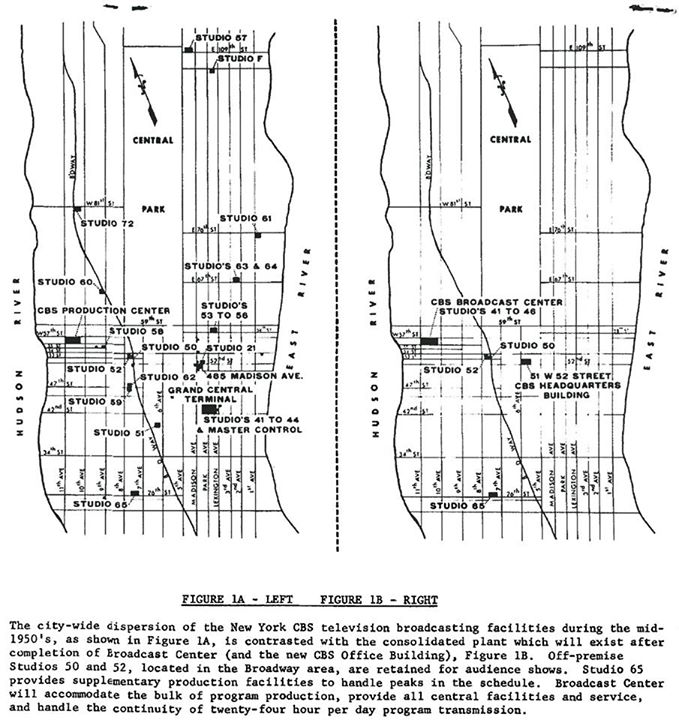



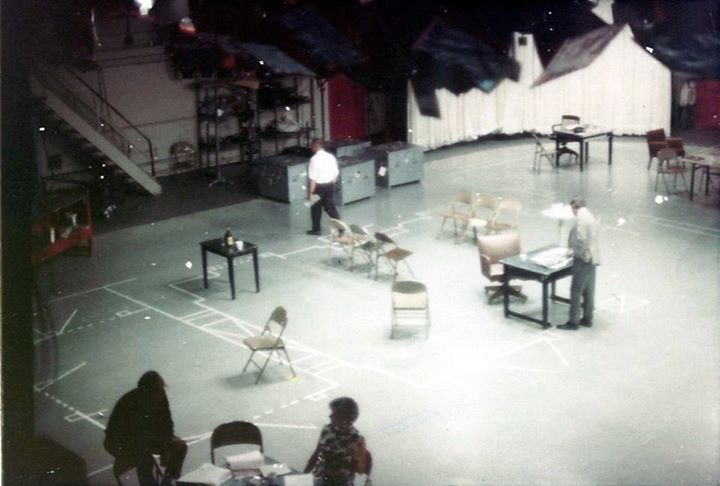



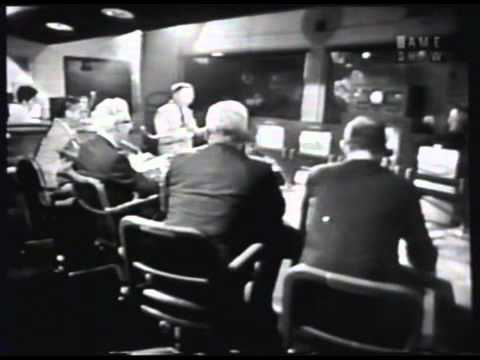





Posts in Category: TV History
Page 87 of 136
« Previous
1
2
3
4
5
6
7
8
9
10
11
12
13
14
15
16
17
18
19
20
21
22
23
24
25
26
27
28
29
30
31
32
33
34
35
36
37
38
39
40
41
42
43
44
45
46
47
48
49
50
51
52
53
54
55
56
57
58
59
60
61
62
63
64
65
66
67
68
69
70
71
72
73
74
75
76
77
78
79
80
81
82
83
84
85
86
87
88
89
90
91
92
93
94
95
96
97
98
99
100
101
102
103
104
105
106
107
108
109
110
111
112
113
114
115
116
117
118
119
120
121
122
123
124
125
126
127
128
129
130
131
132
133
134
135
136
Next » ‘Snap Judgement’, NBC Studio 8H…2 & 3 of 12
On March 24, 2014
- TV History
‘Snap Judgement’, NBC Studio 8H…2 & 3 of 12
Thanks to Bob Batsche, here are photos of a game show hosted by Ed McMahon taken in early 1969. As we learned on the ‘Match Game’ photos, there were rehearsals with stand in announcers to give the celebrities and non celebrity contestants a feel for the show, where the buzzers are and where to look. More than likely, this stand in for Ed is one of the writers. Behind one of the four TK41s on the set is Art Graham. In the photo on the bottom, the lady in the glasses looks like Meredith MacRae who we saw with her dad, Gordon MacRae playing ‘Match Game’. That may be him (Gordon) here too?
More Pictures From NBC 3H…Granddaddy Of Them All
On March 23, 2014
- TV History
More Pictures From NBC 3H…Granddaddy Of Them All
On the left is a look inside the 3H control room in the late 1930s which was on the fourth floor level, but accessible from the studio. In the middle, television’s first ever opera was presented from 3H on March 10, 1940, as the Metropolitan Opera Company staged an abbreviated version of Act I of “Pagliacci”. On the right, a description of the kind of makeup needed by actors in those early days of blazing lights and Iconoscopes.
‘Camel News Caravan’ Debut…NBC’s 1949 Press Release
On March 23, 2014
- TV History
‘Camel News Caravan’ Debut…NBC’s 1949 Press Release
On February 16, 1949 John Cameron Swayze delivered the first edition of this show live from Studio 3H. ‘Camel News Caravan’ was preceded a year earlier by NBC’s first news program called ‘NBC Television Newsreel’ which was all voice on film. Some have Fox Movietone News as the film source, but RCA had a strong relationship with RKO which distributed Pathe News.
I’ve also recently discovered that NBC’s Uptown Studios, which they took over in December of 1948, was owned by Pathe. That was a three building complex which included Pathe’s labs and studios. Operation logs and news accounts suggest that NBC had a telecine room there as early as mid 1948 and that some of the film used on Swayze’s show was rolled from there, especially “breaking news”. NBC didn’t have film processing equipment in those days and used Pathe’s labs for that purpose. Late arriving film was processed quickly and without a positive print being made, could be shown, still wet, as a “hot Kine”. On screen, it looked like a positive print as the polarity was reversed on the negative’s transmission while it was running.
Here is an entire edition of Caravan from September 19, 1952…just days before Vice President Richard Nixon’s famous “Checkers” speech. As you see, the story is starting to break. Notice the stations that were aboard the network at the bottom of page two. Enjoy and Share!
NBC Studio 3H – 3K…Living History
On March 22, 2014
- TV History
NBC Studio 3H – 3K…Living History
Researching all of this NBC Studio History has brought with it a revelation that hits home…literally. As I write, this RCA TK30 is ten feet way, just outside my office door.
I now realize that this is the first black and white television camera ever replaced by a color television camera, but only in an honorary sense. I’m not sure this RCA TK30 was retired from NBC Studio 3H during its conversion to color, but it was presented to mark the occasion.
This is the camera given to NBC President Pat Weaver by NBC. I knew that the honorary “retirement” of this camera was for his many programming accomplishments like ‘Today’, ‘Tonight’ ‘Home’ and “spectaculars”, but had until just last week forgotten how hard Pat worked, not only inside NBC on their color conversion but in Washington lobbying the FCC and other manufacturers for the acceptance of RCA’s compatible color standard.
The part of the story I had forgotten was the circumstances of the presentation. Skip Jennings, the veteran ABC Los Angeles film cameraman that bought the camera from the Weavers had told ABC’s Jan Lowery that the camera was presented to Weaver on the occasion of NBC’s first color studio around 1954 or 55.
Until a few weeks ago, I thought that may have been The Colonial Theater, but now I know that the Colonial was put into color service much earlier than we thought…in late 1952. It had been converted directly from a theater, having never been a black and white facility. The next studio to go color was 3K which was created by combining 3H and 3F. On September 12, 1955 it went into service with the first color broadcast of Howdy Doody.
This camera was proudly displayed in Weaver’s office, until the then Chairman of NBC left in the late 50s. It accompanied him to his new west coast home where his children Trajan and Sigourney played “TV” with it. As a side note, this was the only camera “retired” by color at the time as black and white telecast were staples at NBC till 1965’s big color push, but even then, there were a few more years of b/w camera use left.
RARE NBC OPERATIONS LOGS, 1947
On March 21, 2014
- TV History
NBC Studios History…ULTRA RARE OPERATIONS LOGS, 1947
These pages were copied at the Library Of Congress a few years back by our friend David Schwartz. These are some of the earliest known program relics of those early post war days when the NBC Television Network was basically then, just New York, Philadelphia and Schenectady.
On the left is what I think is a master control schedule from January 26, 1947. In the center, another master control sheet from December 8, 1947 and on the right, a telecast report from the same day. Notice the famous name at the bottom of the telecast report…Fred Coe. Coe would be the man selected by Pat Weaver to head production of NBC’s dramas and anthology shows, including color spectaculars in later years.
On the January sheet we see action from 3H and film/slides from 5F. On the December sheet in the middle, we see a ‘Gillette Cavalcade of Sports’ remote with boxing from Nicholas Arena slides and both 16 and 35mm film from 5F in Radio City.
Goodbye To ‘The Doctors’ & Hello ‘Snap Judgement’
On March 21, 2014
- TV History
Goodbye To ‘The Doctors’ & Hello ‘Snap Judgement’
Before we get to Bob Batsche’s great pictures, my questions is…do you have a forgotten collection of photos like this to share? If you do, let me know or message them in. You can’t imagine the notes I’ve gotten about albums lost in flooded basements, including from Bob, but fortunately he had these 50 or so in a different place.
On the left is ‘The Doctors’ hospital reception set in 3B. On the right, our friend Bob Batsche behind his trusty TK41 in 8H on the set of ‘Snap Judgement’ which was hosted by Ed McMahon. Tomorrow we’ll start on nearly a dozen black and white photos from that show. Many thanks to Bob for taking these and sharing them.
NBC ‘The Doctors’, Photo 2 of 3
On March 20, 2014
- TV History
NBC ‘The Doctors’, Photo 2 of 3
Sorry I forgot this subject yesterday, but here we are back in Studio 3B again with more great Bob Batsche photos from early 1969. This is ‘The Doctors’ lab set and in the foreground, a beautiful shot of an RCA TK41 with yet another Fred Himelfarb modification. Notice the metal baffle on the door…it’s over the side exhaust vent, but why? As we saw in ‘The Match Game’ photos, many times several camera are bunched up right next to the announcers position. As we have learned before, the top wedge shaped baffle is to hide the fan noise from the overhead boom mics…this side baffle diffuses the rear fan noise from the announcer’s stand mounted mic which is just about at this level.
NBC Studios History…ULTRA RARE OPERATIONS LOGS, 1951
On March 20, 2014
- TV History
NBC Studios History…ULTRA RARE OPERATIONS LOGS, 1951
To give you and idea of the kind of information I have been able to use in my research on this project, here are two pages of NBC’s operations logs from March 12 and 13, 1951. Notice on the left are Kine instructions meaning those programs noted would be shown live but also routed to Radio City for kinescope recording.
The -L and -N abbreviations mean Local or Network. On the Monday, March 12 log, at the top, I’ll give you an example of the other abbreviations…’Miss Susan’ is live from Philadelphia
(PHILA)-N and is shown on the network plus being fed to Kine. Next, ‘Edgar Guest’ is live from Uptown studio B and is network. ‘Bert Parks’ is in 6B at Radio City. ‘Kate Smith’ is at the Hudson Theater. ‘NBC Comics’ is a cartoon show on film coming from Uptown’s telecine studio F.
Notice next, ‘Gabby Hayes’ (F & C)-N means the live part of the show with Gabby is in Uptown studio C while the film clip part of the show (excerpts from his days as Roy Rogers original side kick in the old 1930s serials) came from Uptown’s telecine studio F. Surprisingly, ‘Camel News Caravan’ is done the same way and in the same place Gabby comes from.
All the A, B, C and F designations are inside the Uptown studios. On the next day’s log, we see Kate Smith’s show at the Hudson has a cut in from 3B at Radio City. I hope you find this as fascinating as I do. Many thanks to our friend, Game Show Network historian David Schwartz for these and many more rarities you will see along the way. Enjoy and share!

The Demise of NBC Burbank Part 2
On March 19, 2014
- TV History
“Requiem for NBC Burbank”: Part II
Our friend Richard Wirth has given us the second part of his look at NBC Burbank, and concentrates a little more on the engineering and technical advancements made on the lot over its 62 year history. There is one annoyance you should know about. About 12 seconds after opening the article, the video of the first Daytime “Truth or Consequences” show suddenly begins to play about one third of the way down in the article. If you have your volume set up high, it could scare the bejeebers out of you. You can scroll down and hit the STOP button and then start it when you’re ready. I’m still looking for the software switch in the embed code to make it play only when or if you’re ready.
http://provideocoalition.com/pvcexclusive/story/the-demise-of-nbc-burbank-part-2
The Demise of NBC Burbank Part 2
Recently, I wrote about the beginnings of NBC’s historic lot in Burbank as the Peacock network completed its move to nearby Universal Studios. The look back on NBC Burbank’s sixty-two year history wouldn’t be complete without exploring some of the technical history NBC engine…
Remembering David Brenner…
On March 18, 2014
- TV History
Remembering David Brenner…
For those of us old enough to remember David in the ’60s and ’70’, we remember a comedian that wasn’t afraid to try new things. He was one of Tom and Dick Smothers’ favorites and broke new ground on their ground breaking show. The photo shows him with Johnny on one of 150 ‘Tonight’ appearances. Great article here.
http://www.nytimes.com/2014/03/16/arts/television/david-brenner-favorite-on-tonight-show-dies-at-78.html?_r=0
You Mean Oliver & Lisa’s House Was Not Real?
On March 17, 2014
- TV History
You Mean Oliver & Lisa’s House Was Not Real?
That does it! I’ll never watch ‘Green Acres’ again! Ever!
‘The Doctors’, NBC Studio 3B…Early 1969 1 of 3
On March 17, 2014
- TV History
‘The Doctors’, NBC Studio 3B…Early 1969 1 of 3
This show debuted in 1963 and ran till 1982, with color starting in 1966. Thanks to our friend, NBC cameraman Bob Batsche, we have some great pictures from the set. Here’s a rehearsal shot with a gray scale chip chart and my favorite camera, the TK41.
CBS Studios…Before And After The Broadcast Center Opened
On March 16, 2014
- TV History
CBS Studios…Before And After The Broadcast Center Opened
CBS purchased the Sheffield Farms dairy depot in 1952 and for many years, it was used mostly for scenery and storage. In the early 60s, it was known as the Production Center as many of CBS’s shows had offices here, like Ed Sullivan. In early 64 work began to convert the building to studio space and by late that year master control finally moved from Grand Central to the new CBS Broadcast Center. With five large studios, and other smaller ones, CBS moved shows in from their many of site stages. More in Comment section.
A Genuine Rarity & Some NEW NBC Color History
On March 16, 2014
- TV History
A Genuine Rarity & Some NEW NBC Color History
This rare photo shows the RCA engineers that were charged with the design and creation of the TK40. Many others (who’s work was part of the development of live color systems) were involved, but when it came to putting all of that into a final product ready for production (in Camden), the job fell to these men in Princeton. Here is the team with the original engineering model.
Notice a few things…first, it is RCA’s umber gray and second, it has a focus knob at the right rear. Now for the educated guessing part of this post. I suspect this was built in the summer of 1951 while the “coffin cameras” were being tested at NBC 3H. On July 9, 1951 RCA did a remote with one of the 3 “coffin cameras” from Palisades Park (right photo). The black camera got so hot it nearly went out…it was decided then and there these cameras had to be silver to reflect the suns heat. Ergo, all production models would be silver. Notice in the Palisades Park photo, the side mounted focus knob is in use. Feedback from the cameramen using the “coffin cameras” was that it was so big and heavy, they needed more control, so, taking a trick from the old Iconoscope playbook, RCA made the right pan handle the focus demand just like it was on the old pre TK cameras.
In recent research, I have learned from several sources* that The Colonial Theater was actually converted to color and equipped with the first 4 TK40 production models by November of 1952 which is a year earlier than most historians had thought. Although the historic color “firsts” would not start till early fall of ’53, I am now positive that full blown closed circuit color testing was going on at The Colonial starting in November of ’52. After these first 4 TK40s were delivered to The Colonial, I’m pretty sure RCA did not build more until at least a year later. I think they put the cameras through their paces, made adjustments and improvements and only then did they begin work in Camden to build the 40, and actually only 28 TK40s were ever made and April 1954 is the first time they were sold. The TK41 came on line later in 1954 with more upgrades.
* The sources include “Radio Age”, “Broadcasting Magazine” and NBC historical papers just made available.
Last Bob Batsche Color Photo From NBC 8H…The B&W Photos Start Tomorrow
On March 16, 2014
- TV History
Last Bob Batsche Color Photo From NBC 8H…The B&W Photos Start Tomorrow
First, does anyone know if this staircase is still there? This photo from January ’69 shows the west wall of 8H (where the SNL permanent sets are now), and stairs that led to the old 9th floor control room. I don’t know what we are seeing here, but suspect the floor markings are for a one time dramatic presentation. This photo was taken from the glassed in bird’s eye studio we saw Huntley and Brinkley using during Apollo 8. Starting tomorrow, we’ll see color pix from 3B and black and white photos of 8H during the taping of ‘Snap Judgement’ with Ed McMahon as MC.
‘The Match Game’, NBC Studio 8H…Photo 5 of 5
On March 15, 2014
- TV History
‘The Match Game’, NBC Studio 8H…Photo 5 of 5
With the help of Dick DeBartolo (who is shown here sitting in Gene Rayburn’s chair), and some sleuthing of my own, I have discovered that this series of photos by NBC cameraman Bob Batsche were taken during the week of February 3-7, 1968. Episodes 1591-1595, the two celeberty team captains were father-daughter performing duo Meredith & Gordon MacRae. These are rehearsal shots, and I had wondered about that, but back then, the game was different.
In the later CBS Television City version, there were six stars and two non celebrity panel members, but NBC’s original version was played with two celebrity team captains with two non celebrity players on each team. As Dick explained, the questions in rehearsal were not the show questions and was done to get players familiar with the mechanics, like how to put their answers cards in the slot. In the foreground is Johnny Olson’s mic and behind it, camera 2, with 3 and 4 to the right (not shown). Camera 1 was shooting from the left end of the set and was “the question camera” that would shoot Gene Rayburn with a monitor next to it for Gene’s benefit.
In case you missed it in earlier posts, Dick DeBartolo was the writer that saved ‘The Match Game’ from cancellation early on by coming up with the more “titillating” line of questions. As many of you know, Dick was, and still is one of MAD Magazine’s top writers.


CBS Studio 52…The New Yorker Theater, Part 2 MUST SEE
On March 14, 2014
- TV History
CBS Studio 52…The New Yorker Theater, Part 2 MUST SEE
THIS IS THE BEST LOOK YOU WILL EVER GET OF STUDIO 52! This one of a kind look inside happened on the 10th Anniversary show of ‘I’ve Got A Secret’. In the first 6 minutes, we go from the control room to the stage and meet ALL of the crew members. Remember, after CBS sold it, this was the location of the famous Studio 54 night club (so named because the entrance is on 54th Street, the stage entrance is on 53rd). In the last half, you’ll get good idea of where television’s talented crews came from as they sing, dance and perform on stage. What a great crew! ENJOY and share!
http://www.youtube.com/watch?v=hgR87ZP1sf8&feature=em-share_video_user
A trip inside the control room shows more of the crew, including producer Chester Feldman; Garry and crew members play “Ain’t She Sweet” and “12th Street Rag.”
CBS Studio 52…The New Yorker Theater, Part 1
On March 14, 2014
- TV History
CBS Studio 52…The New Yorker Theater, Part 1
In part 2, you see this theater like never before, but take a look here first. Notice the nice big wings and the long camera ramp…you’ll see Gary Moore walk up it in the second part when we visit a very special edition of ‘I’ve Got A Secret’ which originated here along with a lot of other famous CBS shows. This is on the same block as Ed Sullivan’s Studio 50 and goes all the way from W 54 to 53, just behind Sullivan and if you remember from a couple of days back, is also next to the infamous subway transformer.
June 8, 1939…The First Orthicon Camera
On March 14, 2014
- TV History
June 8, 1939…The First Orthicon Camera
On this day in 1938, two experimental RCA Orthicon cameras were put into service along side two RCA Iconoscope cameras at Ebbets field for a daytime game between the Dodgers and the Reds. This was televisions first ever broadcast of a major league baseball game and was only a month after the first ever college baseball game broadcast.
On top, we see the Orthicon camera which still did not have an electronic viewfinder, but the optical system shared with the studio style Iconoscopes…the field Iconoscopes had a gun sight. Notice also the wedge plate sticking our from under the camera…this mount is all new too as the field Iconoscope cameras slid onto the pan head from the side with the use of built in brackets.
Below, we see an article from Broadcasting Magazine that, although it describes the broadcast of the first night game in June of 1941, it features a photo from the June 8, 1939 game that shows the Orthicon and Iconoscope cameras in use together for comparison purposes. Remember, visit this page for a better experience of this great history. Thanks! -Bobby Ellerbee
Page 87 of 136
« Previous
1
2
3
4
5
6
7
8
9
10
11
12
13
14
15
16
17
18
19
20
21
22
23
24
25
26
27
28
29
30
31
32
33
34
35
36
37
38
39
40
41
42
43
44
45
46
47
48
49
50
51
52
53
54
55
56
57
58
59
60
61
62
63
64
65
66
67
68
69
70
71
72
73
74
75
76
77
78
79
80
81
82
83
84
85
86
87
88
89
90
91
92
93
94
95
96
97
98
99
100
101
102
103
104
105
106
107
108
109
110
111
112
113
114
115
116
117
118
119
120
121
122
123
124
125
126
127
128
129
130
131
132
133
134
135
136
Next »